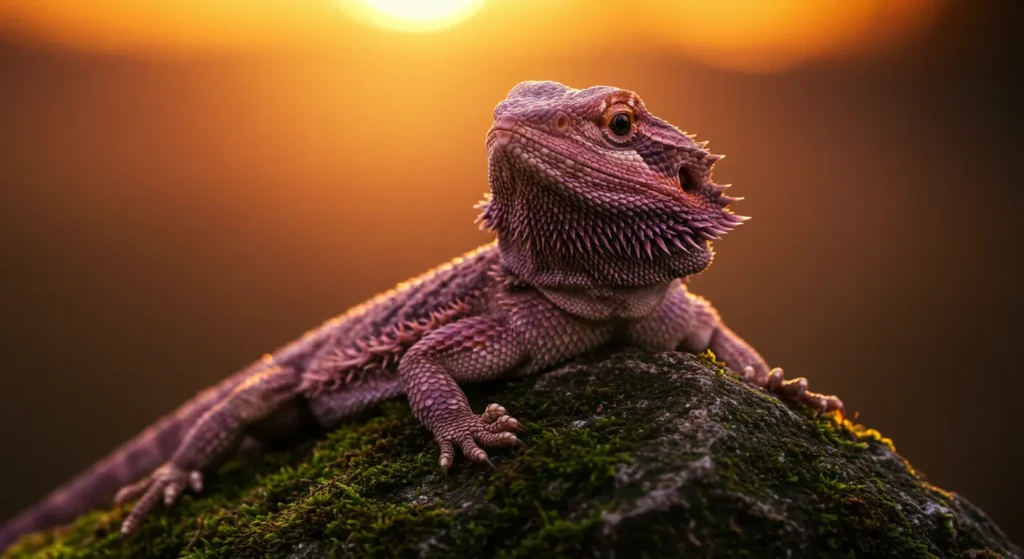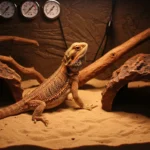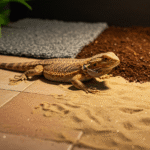If you’ve spent any time scrolling through reptile groups or browsing exotic pet forums, you’ve probably seen it. A glowing, lavender-scaled lizard with an almost mystical vibe. Yep, we’re talkin’ about the Purple Bearded Dragon. Sounds wild, right? Almost too cool to be true. So what gives? Is this a real morph or just another internet trickery?
Let’s dig into the truth, the hype, and all the juicy reptile drama that comes with it.
Is the Purple Bearded Dragon Real or Just a Myth?
Why This Morph Captures So Much Attention Online
The name alone kinda sells itself. Purple Bearded Dragon just hits different. It sounds rare, magical, even majestic. Combine that with a few photoshopped images and boom — the internet’s got a new obsession.
People love the idea of owning something no one else has. It’s the reptile version of a unicorn.
Real Reptile Morph vs. Photoshop Fantasy
Here’s the real deal — no verified breeder has ever produced a naturally purple bearded dragon. Most of the images that go viral have been tweaked or color-enhanced. There are some cool morphs out there — like red, citrus, hypo, translucent — but purple? Not officially in the books.
A lotta those pics floating around are the result of editing magic. Harsh lighting, boosted contrast, or even paint (yikes). Some folks will do anything to go viral.
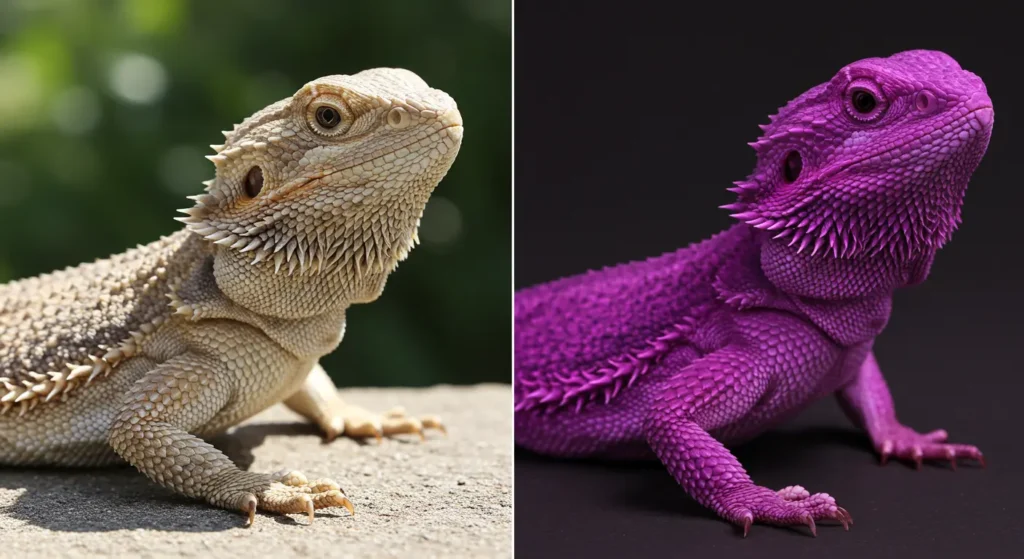
The Role of Lighting, Filters, and Editing in Reptile Photos
You’d be surprised how different a beardie can look under a grow light or with a little Instagram filter. Even a citrus morph can look purple-ish if the lighting is blue or violet-toned. So unless you’re seeing the dragon in person — or from a legit breeder — take those pics with a grain of salt.
What Breeders and Experts Say About the Purple Coloration
Most professional breeders will straight-up tell you — the purple bearded dragon doesn’t exist naturally. Some might advertise a “lavender tint” or say a dragon “flashes purple in the light,” but it’s never a true purple morph.
In fact, some breeders get annoyed by the question. They’ve been asked so many times, it’s become kinda like asking if unicorns lay eggs. Fun to imagine, not exactly grounded in real reptile science.
The Truth About Bearded Dragon Color Morphs
How Bearded Dragon Morphs Are Created Through Selective Breeding
All the cool color morphs you’ve seen — from blazing red to snow white — are made through selective breeding. Breeders pair dragons with dominant or recessive color traits and work over generations to bring out the look they want.
It ain’t instant. And it sure ain’t easy. Creating a morph takes years, patience, and a deep knowledge of reptile genetics.
If you want to explore more about how bearded dragon mutations and morphs develop, check out this detailed guide on Bearded Dragon Mutations: What You Need to Know — it’s packed with useful info and real examples.
Known Color Morphs: Red, Citrus, Translucent, and More
Your Original Paragraph (edited slightly to include links):
Let’s talk real morphs you can actually find:
– Citrus – bright yellow or lime green tones
– Red or Blood Red – deep crimson to orange shades (see what makes the red morph so unique)
– Hypo (Hypomelanistic) – lighter patterns due to reduced melanin
– Translucent – clear scales and even blue bellies as babies
– Leatherback – smoother scales and more vibrant color
Notice the absence of purple in that list? Exactly.
Want to know how these morphs come to exist in the first place? Here’s a full breakdown of bearded dragon selective breeding.
Can Genetics Produce a True Purple Bearded Dragon?
As of now, no genetic line has produced a true purple morph. The dragon genome doesn’t carry traits that allow for deep violet pigmentation — at least not yet.
Maybe in the future, with enough crossbreeding and mutation tracking, something close might emerge. But until then, purple bearded dragon remains more fiction than fact.
Common Misconceptions About Exotic Color Morphs
Some people think rare color = fake. Others think color always equals health issues. The truth? Not all exotic morphs are unhealthy or unethical — but some definitely are over-hyped or misleading.
Always do your research before trusting a flashy Instagram post.
What Makes the Purple Bearded Dragon So Unique?
Visual Traits That Set It Apart (Even If Artificial)
Even if it’s not a legit morph, you gotta admit — it looks amazing. The contrast between violet hues and sandy undertones can be stunning, even if it’s all camera tricks.
That fake beauty? Still enough to make people ask questions. And that curiosity drives clicks, sales, and hype.
Psychological Appeal of Rare and “Fantasy” Reptiles
Humans love rare stuff. Especially pet owners. There’s something about saying “I’ve got something no one else has” that triggers the collector’s brain.
A purple bearded dragon taps into that urge hard.
Why Some Owners Claim to Own One
Some folks claim they have a true purple beardie. In reality, it’s usually a:
- Light red or citrus morph under weird lighting
- Translucent baby that looks bluish or lavender temporarily
- Dyed or digitally altered photo used for promotion
They’re not lying on purpose — they just believe what they’ve been sold.
Ethical Concerns Around Dyed or Enhanced Reptiles
Yep, it happens. Some shady sellers will dye reptiles or manipulate photos to boost prices. That’s not just unethical — it can be dangerous for the animal.
Always check for reputable breeders. If it sounds too magical to be real, it probably is.
How to Spot Fake vs. Real Bearded Dragon Photos
Signs of Edited or Filtered Images
Look out for:
- Over-saturated colors
- Unrealistic shine or glow
- No natural shadowing
- Glitches around scale edges
If it looks like it came out of a fantasy game, it probably didn’t come from nature.
Trusted Sources for Reptile Photos and Info
Stick with real breeders or trusted reptile sites. Avoid sketchy marketplaces with no reviews or proof of care.
Sites like:
- MorphMarket
- Reptile Forums with moderation
- Verified breeder Instagram accounts
What to Ask a Seller Before Buying Any Rare Morph
If you’re talkin’ to someone who claims to sell a purple bearded dragon, ask:
- Can you show unedited photos in daylight?
- Do you have lineage and morph history?
- Are you a registered breeder?
If they dodge, deflect, or get defensive — walk away.
How Fake Listings Can Mislead First-Time Buyers
New reptile owners are the biggest targets. They don’t know the signs, they just see something cool. Scammers love that.
That’s why learning the basics (like you’re doing now) is such a smart move.
Considering a Purple Bearded Dragon? Here’s What to Know First
Better Alternatives: Morphs That Are Beautiful and Real
So you want something striking and rare? Good news — you’ve got options.
Check out:
- Blood Red Morphs
- Zero Morph (no patterns at all)
- Hypo Translucent Morphs
They’re stunning, real, and don’t come with the drama of the purple myth.
Key Things to Ask Breeders About Unusual Morphs
If you’re lookin’ for something different, chat with experienced purple bearded dragon breeders — even if they don’t offer that color, they’ll steer you right.
Ask them:
- What morph is this, genetically?
- Is this coloration natural or temporary?
- How was this dragon raised and cared for?
Tips for Ethical Buying and Reptile Welfare
Ethical buying matters — a lot. Avoid impulse purchases from online sellers who won’t show you proper setups, diet, and health records.
Look for breeders who:
- Show clean living environments
- Offer education, not just animals
- Are transparent about genetics and lineage
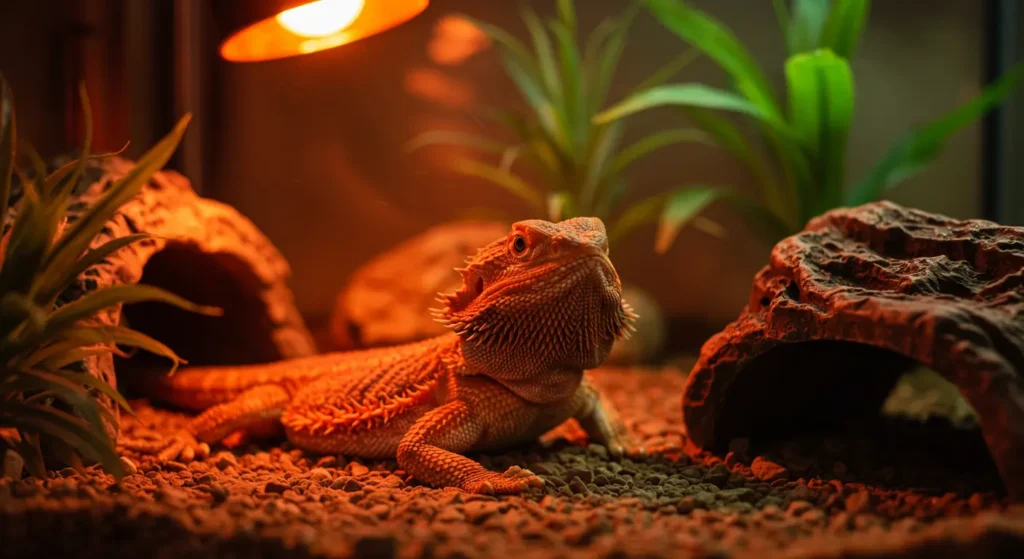
Final Thoughts on Owning a Purple Bearded Dragon
We get it. The idea is amazing. A purple bearded dragon would be a showstopper. But right now, it’s mostly smoke and filters.
Don’t let hype replace facts. There are tons of gorgeous, real morphs waiting for you out there — without the mystery, the sketchy sellers, or the disappointment.
Stick with trusted breeders. Ask the right questions. And give your future beardie a happy, healthy, myth-free home.
Still curious about exotic morphs or wanna find ethical purple bearded dragon breeders (even if they only offer lookalikes)? Keep digging, keep asking, and keep learning. Your perfect beardie is out there — and it might be even cooler than purple.

